12 May 2017 | Events
[vc_row][vc_column][vc_column_text]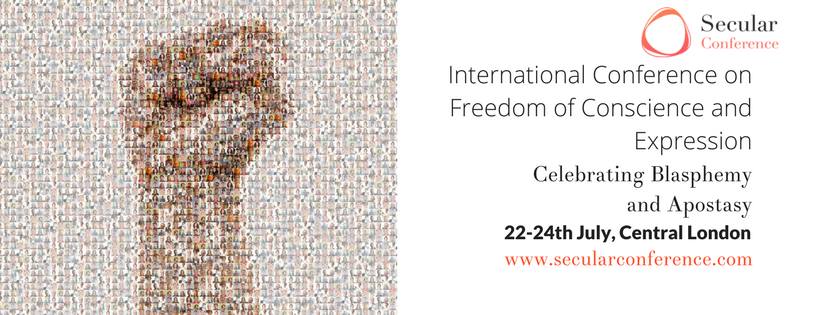
Join notable free-thinkers from around the world for a weekend of discussions and debates on freedom of conscience and expression in the 21st century at a spectacular venue in central London during 22-23 July 2017.
On 24 July, an activist strategy meeting will be followed by body-painting in support of ex-Muslims, which will be open to the public.
The two-day conference will discuss censorship and blasphemy laws, freedom of and from religion, apostasy, the limits of religion’s role in society, LGBT and women’s rights, atheism, secular values and more.
Speakers from countries or the Diaspora as diverse as Afghanistan, Algeria, Bangladesh, Canada, Egypt, France, India, Iran, Iraq, Iraqi Kurdistan, Ireland, Lebanon, Malaysia, Morocco, Nigeria, Norway, Pakistan, Palestinian Territories, Poland, Saudi Arabia, Sudan, Sweden, Switzerland, Syria, Turkey, Tunisia, UK, Ukraine, US and Yemen will gather in London to defend freedom of conscience and expression and argue that freedoms are not western but universal.
The conference will highlight the voices of people on the frontlines of resistance – many of them persecuted and exiled – as well as address challenges faced by activists and freethinkers, elaborate on the links between democratic politics and free expression and conscience, promote secular and rights-based alternatives, and establish priorities for collective action.
Art and culture will be integral to the event as will lively debate with the dauntless use of the free word.
Full schedule: http://www.secularconference.com/agenda-2017/
Confirmed Distinguished Speakers:
A C Grayling, Philosopher
Aliaa Magda Elmahdy, Egyptian Feminist Activist
Alya Al-Sultani, British-Iraqi Vocalist and Composer
Ani Zonneveld, Founder and President of Muslims for Progressive Values
Annie Laurie Gaylor and Dan Barker, Co-Presidents of the Freedom From Religion Foundation
Armin Navabi, Founder of Atheist Republic
Asher Fainman, President of Goldsmiths Atheist Society
Benjamin David, Editor-in-Chief of Conatus News
Bonya Ahmed, Activist, Writer and Blogger at Mukto-Mona
Cemal Knudsen Yucel, Co-Founder and Chair of Ex-Muslims of Norway
Chris Moos, Secular Activist
Damon Conlan and Neil Edwards, Magicians
Dave Silverman, President of American Atheists
Deeyah Khan, Filmmaker
Djemila Benhabib, Author and Activist
Elham Manea, Yemeni-born Author and Human Rights Campaigner
Fariborz Pooya, Bread and Roses TV Presenter and Editor
Fauzia Ilyas, Founder of Atheist & Agnostic Alliance Pakistan
Gina Khan, One Law for All Spokesperson
Gita Sahgal, Director of Centre for Secular Space
Gona Saed, Co-Founder of Kurdistan Secular Centre
Gurpreet Kaur Bhatti, Award-winning Playwright
Halima Begum, Ex-Muslim Feminist Researcher and Blogger
Hassan Radwan, Agnostic Muslim Khutbahs blog
Houzan Mahmoud, Culture Project Co-Founder
Imad Iddine Habib, Founder of Council of Ex-Muslims of Morocco
Inna Shevchenko, FEMEN Leader
Iram Ramzan, Journalist and Founder of Sedaa
Ismail Mohamed, Egyptian Atheist and Founder of Black Ducks Talk Show
Jane Donnelly and Michael Nugent, Atheist Ireland’s Human Rights Officer and Chairperson
Jodie Ginsberg, CEO of Index on Censorship
Karima Bennoune, UN Special Rapporteur in the Field of Cultural Rights
Karrar D. Al Asfoor, Co-founder of Atheist Alliance Middle East and North Africa
Kate Smurthwaite, Comedian
Kenan Malik, Author and Broadcaster
London Humanist Choir
Maajid Nawaz, Founding Chairman of Quilliam Foundation
Marieme Helie Lucas, Algerian Sociologist and Founder of Secularism is a Women’s Issue
Mario Ramadan, Co-Founder of Freethought Lebanon
Maryam Namazie, Iranian-born Rights Activist, Writer and Conference Organiser
Nadia El Fani, Tunisian Filmmaker
Nasreen Rehman, Co-Founder and Chair of British Muslims for Secular Democracy
Nina Sankari, Polish Atheist Activist
Noura Embabi, Muslim-ish President
Peter Tatchell, Human Rights Campaigner
Pragna Patel, Director of Southall Black Sisters
Rana Ahmad, Head of the RDF Arab Atheist Community
Rayhana Sultan, ExMuslimBecause
Richard Dawkins, Author and Scientist (subject to availability)
Sadia Hameed, Spokesperson of the Council of Ex-Muslims of Britain
Sanal Edamaruku, Founder and President of Rationalist International
Sarah Haider, Co-Founder of Ex-Muslims of North America
Sarah Peace, Nigerian Artist and Director of Fireproof Library
Savin Bapir Tardy, Counselling Psychologist for The Iranian and Kurdish Women’s Rights Organisation
Shabana Rehman, Performance Artist and Human and Animal Rights Advocate
Shelley Segal, Singer/Songwriter
Tasneem Khalil, Swedish-Bangladeshi Journalist and Editor of Independent World Report
Teresa Gimenez Barbat, MEP, Group of the Alliance of Liberals and Democrats for Europe and Euromind
Victoria Gugenheim, Award-winning Body Artist
Waleed Al Husseini, Palestinian Writer and Founder of Council of Ex-Muslims of France
Yasmine Mohammed, Confessions of an ExMuslim
Yasmin Rehman, Women’s Rights Campaigner
Zehra Pala, President of Atheism Association of Turkey
Zineb El Rhazoui, Moroccan-born Columnist for Charlie Hebdo
Speaker biographies available here: http://www.secularconference.com/speakers-2017/
For more information, contact Maryam Namazie, [email protected].uk.
The conference is sponsored by: Alliance of Liberals and Democrats for Europe; Atheist International Alliance; Bread and Roses TV; Center for Inquiry; Centre for Secular Space; Council of Ex-Muslims of Britain; Culture Project; Euromind; Equal Rights Now; Fitnah; Freedom from Religion Foundation; National Secular Society; One Law for All; Richard Dawkins Foundation for Reason and Science; Southall Black Sisters; and Secularism is a Women’s Issue.[/vc_column_text][/vc_column][/vc_row][vc_row][vc_column][vc_column_text]
When: 22-24 July
Where: Central London
Tickets: From £65 via Secular Conference No tickets will be sold at the door.
[/vc_column_text][/vc_column][/vc_row]
27 Mar 2017 | Awards, Israel, Middle East and North Africa, News
[vc_row][vc_column][vc_column_text]
Breaking the Silence, an Israeli organisation consisting of Israeli veteran combatants, aims to collect and share testimonies about the realities of military operations in the Occupied Territories. Since 2004, the group has collected over 1,000 (mainly anonymous) statements from Israelis who have served their military duty in the West Bank and Gaza.
In 2014, Breaking the Silence published 111 testimonies from over 60 soldiers who served in Operation Protective Edge in Gaza. The organisation reached out to soldiers directly after the cessation of bombing in Gaza and published a book of its findings in May 2015. For publishing these frank accounts Breaking the Silence has come under repeated attack from the Israeli government.

A Breaking the Silence guided tour of Hebron and the South Hebron Hills
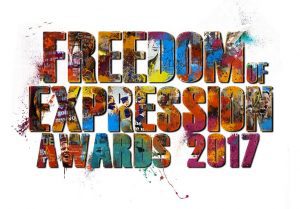 In 2016 pressure on the organisation became particularly pointed and personal, with state-sponsored legal challenges, denunciations from the Israeli cabinet, physical attacks on staff members and damages to property. Led by Israeli politicians including the prime minister, and defence minister, there have been persistent attempts to force the organisation to identify a soldier whose anonymous testimony was part of a publication raising suspicions of war crimes in Gaza. Losing the case would set a precedent that would make it almost impossible for Breaking the Silence to operate in the future. The government has also recently enacted a law that would ban the organisation’s widely acclaimed high school education programme.
In 2016 pressure on the organisation became particularly pointed and personal, with state-sponsored legal challenges, denunciations from the Israeli cabinet, physical attacks on staff members and damages to property. Led by Israeli politicians including the prime minister, and defence minister, there have been persistent attempts to force the organisation to identify a soldier whose anonymous testimony was part of a publication raising suspicions of war crimes in Gaza. Losing the case would set a precedent that would make it almost impossible for Breaking the Silence to operate in the future. The government has also recently enacted a law that would ban the organisation’s widely acclaimed high school education programme.
Following the attacks on the organisation, hundreds of soldiers began to break their own silence in a spontaneous outpouring of support for the group. The soldiers, who are non-Breaking the Silence testifiers, posted pictures on social media of their army service. This included testimonies from soldiers who served in the First and Second Intifadas and even the Lebanon War. Public figures, musicians, artists, and hundreds of individuals, were involved in this wave of support.
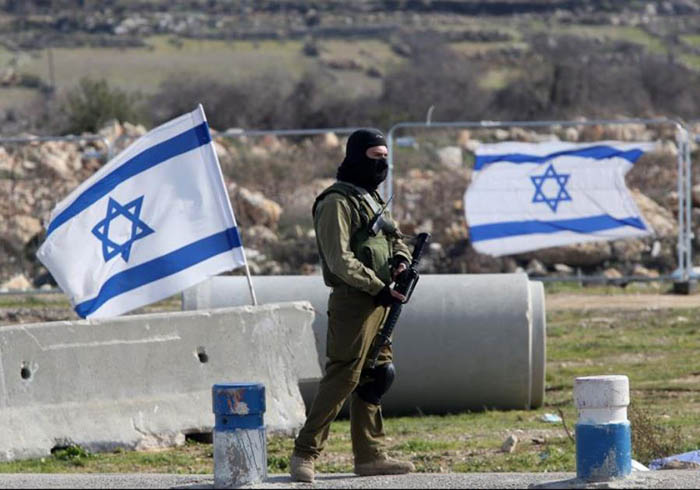
Israel Defence Forces soldier manning a checkpoint
In March 2017, Israel’s state prosecutor asked a court to dismiss its previous request to force Breaking the Silence to provide details that were liable to expose the identity of a soldier whose testimony raised suspicions of war crimes.[/vc_column_text][/vc_column][/vc_row][vc_row full_width=”stretch_row_content” equal_height=”yes” el_class=”text_white” css=”.vc_custom_1490258749071{background-color: #cb3000 !important;}”][vc_column width=”1/2″][vc_custom_heading text=”Support the Index Fellowship.” font_container=”tag:p|font_size:28|text_align:center” use_theme_fonts=”yes” link=”url:https%3A%2F%2Fwww.indexoncensorship.org%2Fsupport-the-freedom-of-expression-awards%2F|||”][vc_column_text]
By donating to the Freedom of Expression Awards you help us support
individuals and groups at the forefront of tackling censorship.
Find out more
[/vc_column_text][/vc_column][vc_column width=”1/2″ css=”.vc_custom_1490258649778{background-image: url(https://www.indexoncensorship.org/wp-content/uploads/2016/04/donate-heads-slider.jpg?id=75349) !important;background-position: center !important;background-repeat: no-repeat !important;background-size: cover !important;}”][/vc_column][/vc_row][vc_row][vc_column][vc_basic_grid post_type=”post” max_items=”4″ element_width=”6″ grid_id=”vc_gid:1490773732537-194f8bf9-6216-9″ taxonomies=”8734″][/vc_column][/vc_row]
7 Feb 2017 | Americas, Art and the Law, Campaigns, Campaigns -- Featured, Statements, United States
[vc_row][vc_column][vc_column_text]
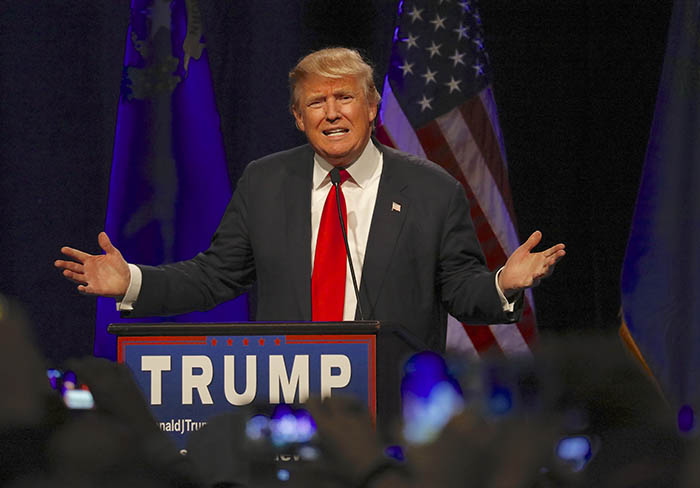
Today, more than thirty cultural institutions and human rights organisations around the world, including international arts, curators’ and critics’ associations, organisations protecting free speech rights, as well as US based performance, arts and creative freedom organisations and alliances, issued a joint statement opposing United States President Donald J. Trump’s immigration ban. Read the full statement below.
On Friday, January 27th, President Trump signed an Executive Order to temporarily block citizens of seven predominantly Muslim countries from entering the United States. This order bars citizens of Iran, Iraq, Libya, Somalia, Sudan, Syria, and Yemen from entering the United States for 90 days. It also suspends the entry of all refugees for 120 days and bars Syrian refugees indefinitely.
The organisations express grave concern that the Executive Order will have a broad and far-reaching impact on artists’ freedom of movement and, as a result, will seriously inhibit creative freedom, collaboration, and the free flow of ideas. US border regulations, the organisations argue, must only be issued after a process of deliberation which takes into account the impact such regulations would have on the core values of the country, on its cultural leadership, and on the world as a whole.
Representatives of several of the participating organisations issued additional statements on the immigration ban and its impact on writers and artists:
Helge Lunde, Executive Director of ICORN, said, “Freedom of movement is a fundamental right. Curtailing this puts vulnerable people, people at risk and those who speak out against dictators and aggressors, at an even greater risk.”
Svetlana Mintcheva, Director of Programs at the US National Coalition Against Censorship (NCAC), said, “In a troubled and divided world, we need more understanding, not greater divisions. It is the voices of artists that help us understand, empathise, and see the common humanity underlying the separations of political and religious differences. Silencing these voices is not likely to make us any safer.”
Suzanne Nossel, Executive Director of PEN America, said, “The immigration ban is interfering with the ability of artists and creators to pursue their work and exercise their right to free expression. In keeping with its mission to defend open expression and foster the free flow of ideas between cultures and across borders, PEN America vows to fight on behalf of the artists affected by this Executive Order.”
Diana Ramarohetra, Project Manager of Arterial Network, said, “A limit on mobility and limits on freedom of expression has the reverse effect – to spur hate and ignorance. Artists from Somalia and Sudan play a crucial role in spreading the message to their peers about human rights, often putting themselves at great risk in countries affected by ongoing conflict. Denying them safety is to fail them in our obligation to protect and defend their rights.”
Ole Reitov, Executive Director of Freemuse, said, “This is a de-facto cultural boycott, not only preventing great artists from performing, but even negatively affecting the US cultural economy and its citizens rights to access important diversity of artistic expressions.”
Shawn Van Sluys, Director of Musagetes and ArtsEverywhere, said, “Musagetes/ArtsEverywhere stands in solidarity with all who protect artist rights and the freedom of mobility. It is time for bold collective actions to defend free and open inquiry around the world.”
A growing number of organisations continue to sign the statement.
JOINT STATEMENT REGARDING THE IMPACT OF THE US IMMIGRATION BAN ON ARTISTIC FREEDOM
Freedom of artistic expression is fundamental to a free and open society. Uninhibited creative expression catalyses social and political engagement, stimulates the exchange of ideas and opinions, and encourages cross-cultural understanding. It fosters empathy between individuals and communities, and challenges us to confront difficult realities with compassion.
Restricting creative freedom and the free flow of ideas strikes at the heart of the core values of an open society. By inhibiting artists’ ability to move freely in the performance, exhibition, or distribution of their work, United States President Trump’s January 27 Executive Order, blocking immigration from seven countries to the United States and refusing entry to all refugees, jettisons voices which contribute to the vibrancy, quality, and diversity of US cultural wealth and promote global understanding.
The Executive Order threatens the United States safe havens for artists who are at risk in their home countries, in many cases for daring to challenge repressive regimes. It will deprive those artists of crucial platforms for expression and thus deprive all of us of our best hopes for creating mutual understanding in a divided world. It will also damage global cultural economies, including the cultural economy of the United States.
Art has the power to transcend historical divisions and socio-cultural differences. It conveys essential, alternative perspectives on the world. The voices of cultural workers coming from every part of the world – writers, visual artists, musicians, filmmakers, and performers – are more vital than ever today, at a time when we must listen to others in the search for unity and global understanding, when we need, more than anything else, to imagine creative solutions to the crises of our time.
As cultural or human rights organisations, we urge the United States government to take into consideration all these serious concerns and to adopt any regulations of United States borders only after a process of deliberation, which takes into account the impact such regulations would have on the core values of the country, on its cultural leadership, as well as on the world as a whole.
African Arts Institute (South Africa)
Aide aux Musiques Innovatrices (AMI) (France)
Alliance for Inclusion in the Arts (USA)
Arterial (Africa)
Artistic Freedom Initiative (USA)
ArtsEverywhere (Canada)
Association of Art Museum Curators and Association of Art Museum Curators Foundation
Association Racines (Morocco)
Bamboo Curtain Studio (Taiwan)
Cartoonists Rights Network International
Cedilla & Co. (USA)
Culture Resource – Al Mawred Al Thaqafy (Lebanon)
International Committee for Museums and Collections of Modern Art (CIMAM)
College Art Association (USA)
European Composer and Songwriter Alliance (ECSA)
European Council of Artists
Freemuse: Freedom of Expression for Musicians
Index on Censorship: Defending Free Expression Worldwide
Independent Curators International
International Arts Critics Association
International Network for Contemporary Performing Arts
The International Cities of Refuge Network (ICORN)
Levy Delval Gallery (Belgium)
Geneva Ethnography Museum (Switzerland)
National Coalition Against Censorship (USA)
New School for Drama Arts Integrity Initiative (USA)
Observatoire de la Liberté de Création (France)
On the Move | Cultural Mobility Information Network
PEN America (USA)
Queens Museum (USA)
Roberto Cimetta Fund
San Francisco Art Institute (USA)
Stage Directors and Choreographers Society (SDC) (USA)
Tamizdat (USA)
Vera List Center for Art and Politics, New School (USA)[/vc_column_text][/vc_column][/vc_row][vc_row][vc_column][vc_basic_grid post_type=”post” max_items=”4″ element_width=”6″ grid_id=”vc_gid:1486570424977-7a30af48-045a-3″ taxonomies=”3784″][/vc_column][/vc_row]
28 Nov 2016 | Bahrain, Bahrain Letters, Campaigns, Campaigns -- Featured
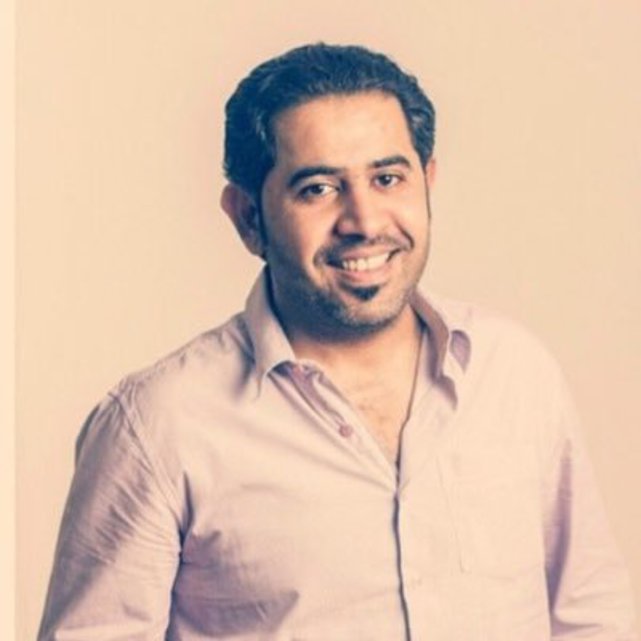
On 29 November Faisal Hayyat was sentenced to 3 months in prison
To: Sheikh Hamad bin Isa Al Khalifa
King of Bahrain
CC :
Hon. Zeid Ra’ad Zeid al-Hussein
High Commissioner for Human Rights
Mr. John F. Kerry
United States Secretary of State
Frederica Mogherini
High Representative of the European Union for Foreign Affairs and Security Policy
The Right Honorable Boris Johnson
Foreign & Commonwealth Office
King Hamad,
We, the undersigned, express our deep concern with the Government of Bahrain’s campaign targeting journalists and activists exercising their right to free expression. On 9 October 2016, the Public Prosecution charged Faisal Hayyat, a sports journalist and social media activist, with insulting a sect and a religious figure. The government’s repeated harassment of Faisal and other online activists demonstrate the ongoing criminalization of free expression in Bahrain.
Faisal Hayyat is a renowned journalist and has appeared on various sports channels and has written for local Bahraini newspapers, Alalam, Albilad, and Akhbar Al Khaleej. He directs and presents short video programs online that provide critical perspectives on local politics.
Bahraini officials previously arrested Faisal in April 2011 for his involvement in the 2011 pro-democracy protests. The Bahraini security forces detained him for 84 days. During his detainment, authorities subjected Faisal to physical and psychological torture, including sexual harassment and degrading treatment. He has been vocal about this and recently published a letter on social media to the Bahraini Minister of Interior detailing the torture to which the government had subjected him. Government authorities never provided compensation for the abuse and never held any officials accountable. In the letter Faisal mentions, “I write this and I know it may cost me my freedom.”
On 7 October, Faisal published tweets commenting on events from early Islamic history. Two days later, Faisal was arrested and charged with “insulting a sect.” The government is therefore treating Faisal Hayyat’s opinion on events of Islamic history as a criminal liability. The government’s decision to prosecute him infringes both his freedom of expression and religion.
The undersigned NGOs believe Faisal has been targeted as part of a silencing campaign against critical voices of the government. Recently, the Bahraini government has brought further criminal charges against human rights defender Nabeel Rajab for an open letter published in the New York Times, and against political opposition leader Ebrahim Sharif for an interview he gave with the Associated Press. Furthermore, the opposition politician Fedhel Abbas received three years in prison for tweets criticizing the war in Yemen.
We, therefore, call on the authorities to respect Article 19 of the International Covenant on Civil and Political Rights (ICCPR), which mandates that “Everyone shall have the right to freedom of expression.” The Bahraini government must also respect Article 19 of the Universal Declaration of Human Rights (UDHR), which mandates that “Everyone has the right to freedom of opinion and expression; this right includes freedom to hold opinions without interference and to seek, receive and impart information and ideas through any media and regardless of frontier.”
As organisations concerned with the right to freedom of expression, we call on the Government of Bahrain to:
■ Immediately and unconditionally release Faisal Hayyat, Nabeel Rajab, and all internet users arrested and imprisoned for merely exercising their right to freedom of expression; and
■ Abide by international human rights standards, including the ICCPR and UDHR, by upholding the right to freedom of expression without any restrictions.
Signed,
Americans for Democracy and Human Rights in Bahrain
Adil Soz – International Foundation for Protection of Freedom of Speech
Afghanistan Journalists Center
Africa Freedom of Information Centre
Albanian Media Institute
ARTICLE 19
Bahrain Center for Human Rights
Bytes for All
Cambodian Center for Human Rights
Canadian Journalists for Free Expression
Center for Independent Journalism – Romania
Centre for Independent Journalism – Malaysia
Freedom Forum
Freedom House
Free Media Movement
Gulf Centre for Human Rights
Human Rights Network for Journalists – Uganda
Hungarian Civil Liberties Union
Independent Journalism Center – Moldova
Index on Censorship
Institute for Reporters’ Freedom and Safety
Institute for the Studies on Free Flow of Information
International Federation of Journalists
International Press Centre
International Press Institute
Maharat Foundation
MARCH
Media, Entertainment and Arts Alliance
Media Institute of Southern Africa
Palestinian Center for Development and Media Freedoms – MADA
PEN American Center
PEN International
Reporters Without Borders
Social Media Exchange – SMEX
South East European Network for Professionalization of Media
Vigilance pour la Démocratie et l’État Civique
World Association of Community Radio Broadcasters – AMARC
World Association of Newspapers and News Publishers
Bahrain Institute for Rights and Democracy (BIRD)
Bahrain Press Association (BPA)
Burundi Child Rights Coalition
English PEN
European – Bahraini Organisation for Human Rights (EBOHR)
European Center for Democracy and Human Rights (ECDHR)
International Federation for Human Rights (FIDH)
Project on Middle East Democracy (POMED)
Salam for Democracy and Human Rights
Union de Jeunes pour la Paix et le Developpement






